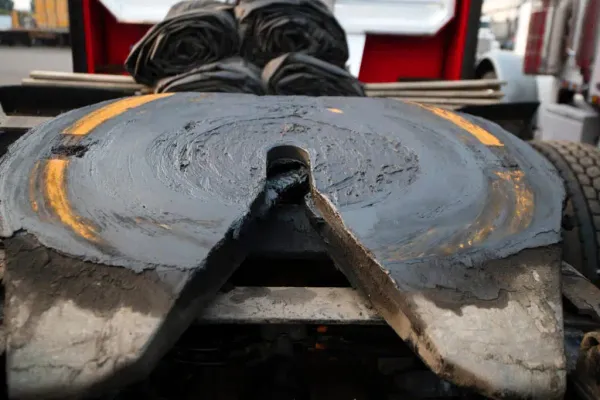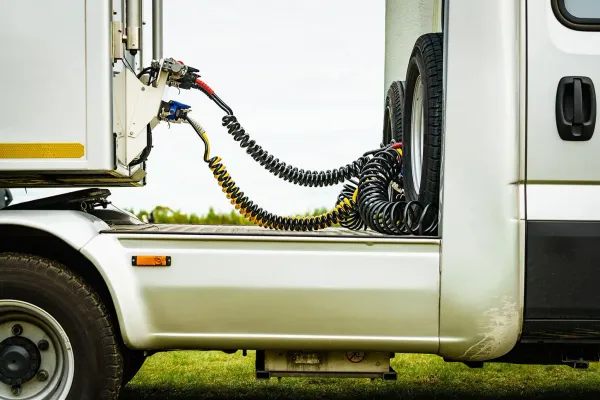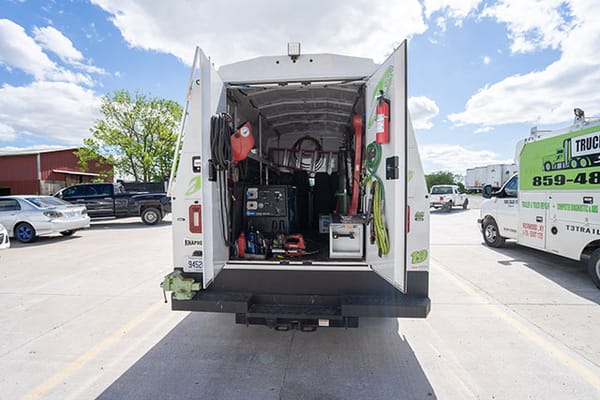Why Tire Blowouts Are 90% Preventable (And How to Catch Them Early)

In this business, few things turn a good haul into a bad day faster than a tire blowout. It’s abrupt, dangerous, and often avoidable. Every driver has felt that jolt, the sudden drag, maybe even the thump of shredded rubber slapping the underside of the trailer. In the best-case scenario, it’s a delay and a repair bill. In the worst, it’s a wreck, a lost load, and a life-altering event.
But here’s the hard truth most seasoned fleet managers and owner-operators already know deep down: the overwhelming majority of tire blowouts shouldn’t happen. They aren’t freak occurrences. They aren’t bad luck. They’re warning signs that were missed—or ignored. And while tires will always be a wear-and-tear item, they shouldn’t be a wildcard.
Blowouts, despite their drama, usually have quiet beginnings.
They start as slow leaks. As heat that builds on a long uphill pull. As tread that should have been changed a thousand miles ago. As weight improperly distributed. Or as that “we’ll deal with it next stop” attitude that creeps into any operation where the clock outpaces common sense.
So, why do we still see so many of them on the road?
Part of the problem is cultural. In trucking, there’s an undercurrent of pride around pushing through. Drivers are problem-solvers by nature. Mechanics are miracle workers. Dispatchers are expected to keep everything moving, always. No one wants to be the one to stop the show because of a tire that might become a problem.
But tires aren’t like other parts. When they fail, they fail big. And when they’re about to fail, they usually tell us—if we’re listening.
Let’s take a closer look at why blowouts are so common, and why they really don’t have to be.
The Hidden Cost of “It’ll Be Fine”
Every fleet has seen it. A driver pulls into the yard or a fuel stop, and the tread on the trailer tires is down to the legal minimum—or maybe worse. It’s not separating yet. It’s still rolling. So, someone shrugs and decides it can make it one more trip.
That kind of thinking is often the root of the issue. Tires don’t explode without warning. They degrade. They cup, crack, and bald. They bulge under uneven loads. They overheat under improper inflation. And every one of those signs is a chance to stop the failure before it happens.
But tires aren’t just a driver’s responsibility, or a shop tech’s, or a dispatcher’s. They sit at the intersection of everyone’s job: operations, safety, maintenance, finance, and even customer service. Because when a blowout happens on the road, it’s not just a maintenance failure—it’s a reputational one. That customer waiting for their load doesn’t want to hear about rubber. They want to know why your truck is late.
What we’re really talking about when we talk about preventing blowouts is accountability—and systems that encourage people to act before something goes wrong, not after.
Tires Talk—Are You Listening?
If you’ve been around enough long-haul operations, you’ll notice something about the most reliable fleets. They don’t rely on instinct alone. They don’t just count on drivers doing a walkaround or shop teams noticing problems during an oil change. They’ve created environments where early signs are not just noticed, but acted upon—consistently.
You can feel an underinflated tire with the palm of your hand. You can hear tread separation before it becomes critical. You can see uneven wear if someone takes the time to look. And you can smell overheating rubber if you’re paying attention during a quick stop.
But modern trucking demands more than just human awareness—it requires human habit. It’s not enough to hope a driver remembers to kick the tires every morning. They have to be given time to do a proper pre-trip. They need to know that no one will penalize them for flagging a tire that might “still have a few hundred miles” in it. Because that kind of proactive culture saves far more than just tires.
It saves lives.
Environmental and Operational Realities
Blowouts also don’t happen in a vacuum. The way a truck is loaded, the quality of the roads it travels, the weather conditions it faces—these all contribute. But here again, we find that most contributing factors are predictable.
If you know your lanes run through areas of extreme heat, then you know your tires will be under more thermal stress. If you know your trailers are being loaded hastily at certain yards, you can anticipate more uneven weight distributions. If your equipment frequently runs over poorly maintained roads or construction zones, you’re facing increased risk of punctures and sidewall damage.
These aren’t surprises. They’re patterns. And smart operators learn to track them—not in spreadsheets, not in technology platforms, but in the knowledge passed through their teams. The dispatcher who knows the rig that always runs heavy on the same axle. The shop lead who sees the same low-grade tires on a particular leased trailer. The driver who senses the pull of a dragging tire long before it’s visible.
This is what separates reaction from prevention: the ability to recognize that you’re running toward risk, and doing something about it before it becomes your next road call.
Creating a Culture of Early Action
It’s tempting to write off blowouts as part of the cost of doing business. But that mindset is costly in ways that aren’t always obvious. Every time a driver is sidelined with a blown tire, you’re not just replacing rubber. You’re losing hours. You’re losing driver trust. You might be violating DOT inspection thresholds without even knowing it.
And worst of all, you’re reinforcing a cycle of “deal with it later” that is both expensive and dangerous.
It doesn’t take fancy tools or big budgets to break that cycle. It takes consistency. It takes empowering people—from dispatchers to drivers to the folks doing post-trip inspections—to speak up and act early. It means making tire health a priority before it becomes a problem.
Because the data doesn’t lie. Most tire blowouts give off signals. Most could be caught. And nearly all of them are cheaper to prevent than to endure.
The Road Ahead
Trucking is a business built on movement. We don’t get paid to sit still. But in the case of tire safety, slowing down—just long enough to really look—might be the most productive thing you can do.
Whether you're managing a fleet or running your own rig, think about the last time you caught a bad tire before it went. Now think about what it would’ve cost if you hadn’t.
The truth is, tire blowouts are not a mystery. They’re a mirror. They reflect how well we’re listening to our trucks, how much we respect the road, and how seriously we take the safety of the people who keep this industry rolling.
And for most of us, the next one isn’t a question of if. It’s a question of how ready we are to stop it before it starts.



